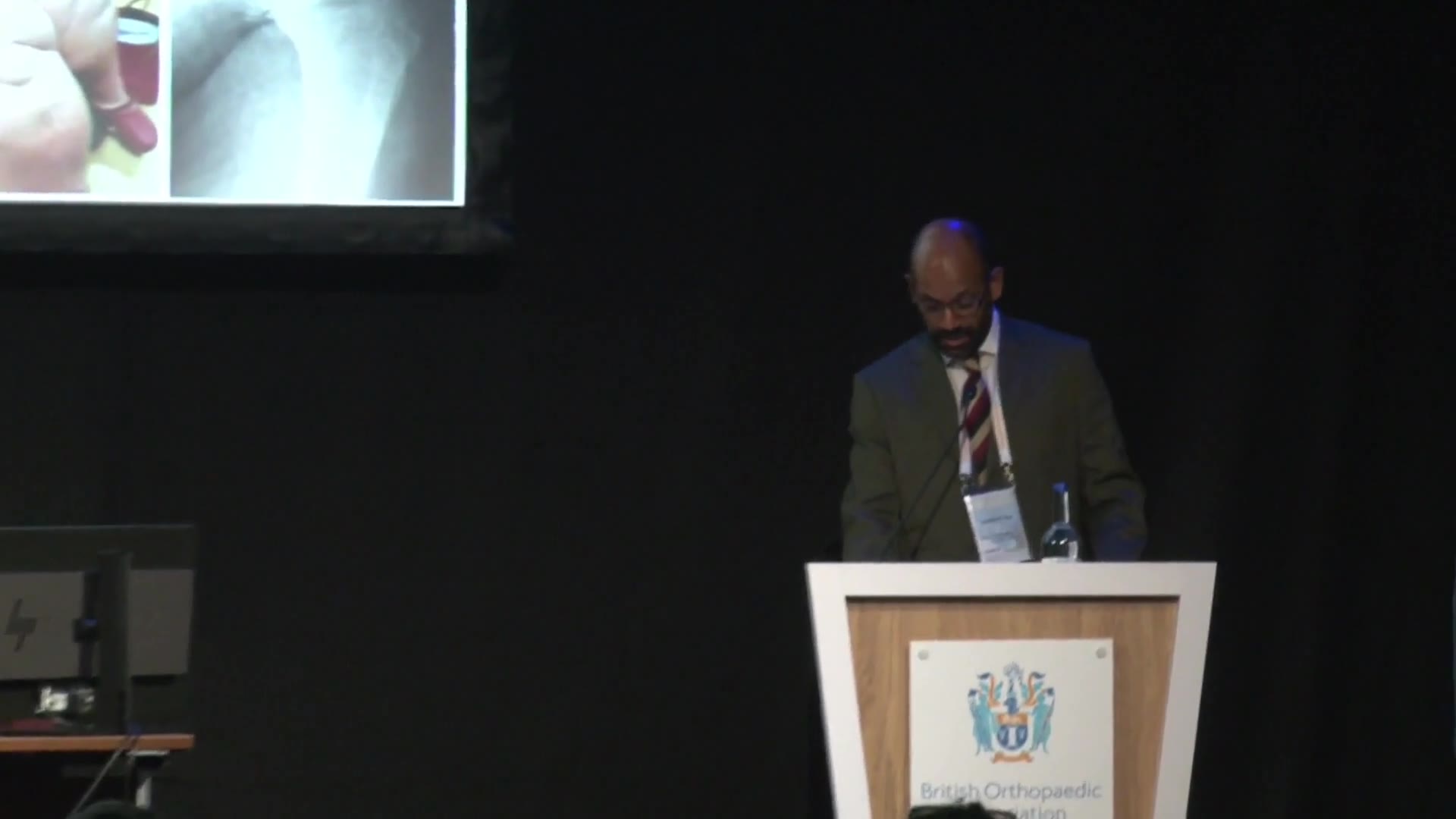Please login to view this media

- Talk
- 21/09/2021
- UK
A Clinical Complexity Scale Combining Local & Systemic Factors, Identifies A Black Swan Patient Group Not Recognised By The UK National Joint Registry
Description
The presentation begins with Sunny Deo addressing the audience, expressing gratitude to the BOA for the opportunity to discuss their research on Black Swan patients in orthopedics, emphasizing its importance and relevance to current and future practice. Sunny highlights the neglected recognition of surgical complexities and confirms that understanding this complexity is crucial, especially when combined with systemic issues. The presented research indicates that current arthroplasty data focuses primarily on systemic factors and implant types, thus missing a significant part of the patient's clinical picture, particularly for those with local complexities.
Sunny elaborates on their complexity scale methodology, which classifies patients based on systemic and local surgery factors into a matrix that includes different groups from the least complex (CN) to the most complex (CLS, or Black Swan Group). He explains that the latter group has been overlooked in coding systems like HES and NJR. Through thorough investigation, the findings show demographic discrepancies in patient groups, particularly a higher prevalence of female patients in complex categories and variations in mean BMI across groups, notably higher in the CLS group.
The discussion delves into significant findings, revealing that operating times and hospital stays are notably lengthier for patients in the CLS group, with discernible differences in mortality rates among groups showcasing the interactions between local and systemic complexities.
Sunny concludes by suggesting that the characteristics of the Black Swan patients necessitate further exploration and validation to inform future orthopedic practices and data systems effectively. The presentation concludes with a call for larger scale investigations to address the coding disparities affecting hospitals economically.
During the Q&A, a question arises about the coding system and reimbursement for treating the CLS patient group, to which Sunny responds that they currently do not have adequate remuneration, leading to significant financial losses for healthcare trusts due to poor coding. The session closes with a discussion about the potential future inclusion of these patients in clinical setups, underscoring ongoing challenges in quantifying complexities in orthopedic cases.